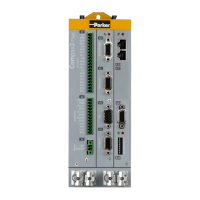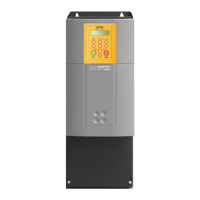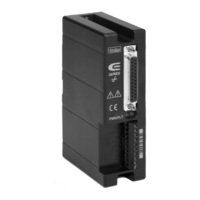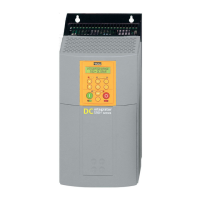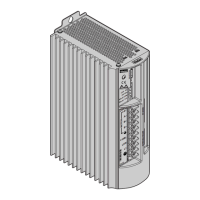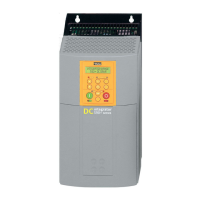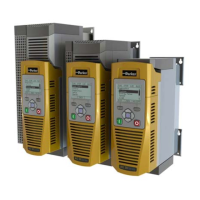Setting up Compax3 C3I22T11
216 192-120114 N5 C3I22T11 June 2008
EMC feedforward
The EMC feedforward compensates the electromagnetically generated back e.m.f.
of the motor U
EMC
. This signal is proportional to velocity and is deduced from the
setpoint velocity of the setpoint generator.
Motor parameters
Furthermore you can re-optimize the motor parameters inductance, resistance and
EMC (or Kt) in the advanced mode. The LdLqRatio parameter is the ratio of the
smallest and the highest inductance value of the winding, measured during one
motor revolution.
Filter "External Command Interface"
For explanations on this group of parameters please see chapter 0
Voltage decoupling
In the current control path there is a velocity and current proportional voltage di-
sturbance variable, which must be compensated by the current loop. Due to limited
controller dynamics, this disturbance variable can not always be entirely compen-
sated by the current loop. The influence of this disturbance variable may however
be minimized by activating the voltage decoupling.
Load control
If a second position feedback is available for the acquisition of the load position,
the load control can be activated.
For more detailed information on the load control see device help for
T30/T40 devices in the setup chapter Compax3\load control.
Luenberg observer
In this chapter you can read about:
Introduction observer ....................................................................................................... 216
Signal flow chart Luenberg observ
er ............................................................................... 217
Introduction observer
A high signal quality of the actual signal value is of high significance in the control
of the motor velocity n or the motor speed v. By means of oversampling and trans-
mitter error compensation, a high-quality position signal can be produced for speed
determination. As a rule the motor speed is determined by numeric differentiation
of the motor position. In this case the quantisation noise QvD of the digital speed
signal depends on the quantisation Qx of the position signal and the sampling time
TAR of the digital control loop:
Quantisation – speed signal QvD
AR
x
vD
T
Q
Q =
The quantisation of the speed signal is inversely proportional to the sampling time
TAR. Hence the demands for the lowest possible sampling time and the minimum
quantisation noise oppose each other in the determination of speed by numeric
differentiation. The noise superimposed by the digital speed signal may be reduced
by the low-pass filter, however this is always at the cost of the stability margin of
the digital control loop. An alternative method is to determine the speed by integra-
tion of the acceleration. The dependence of the quantisation noise QvD of the digi-
tal speed signal on the quantisation Qx of the position signal and the sampling time
TAR of the digital control loop is shown by the following correlation.
Quantisation – speed signal Qvl
ARavI
TQQ ⋅=
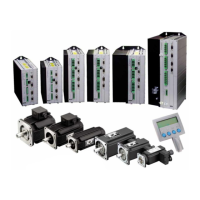
